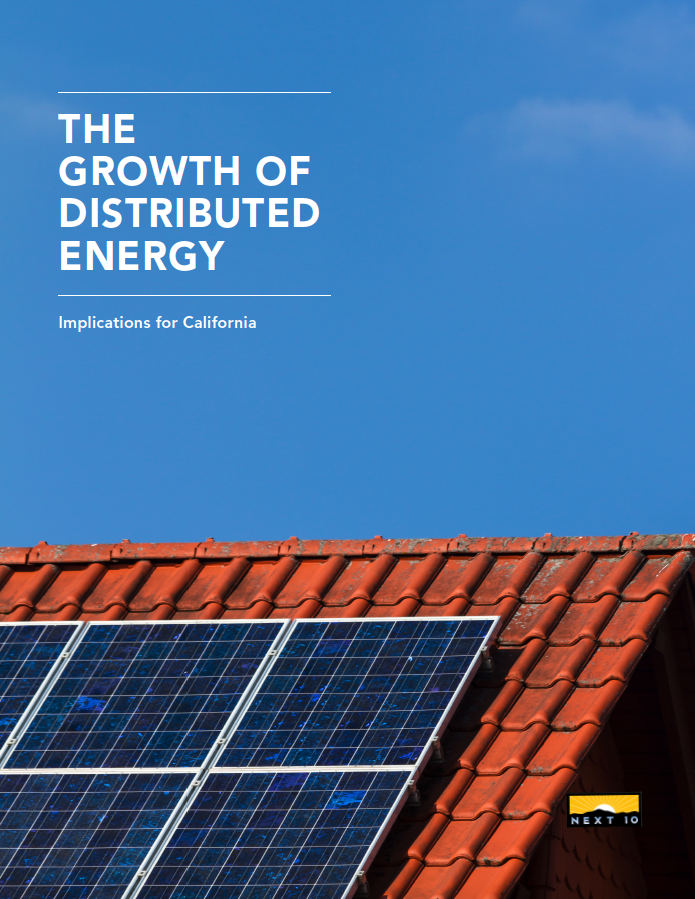Publications
The Growth of Distributed Energy: Implications for California's Grid
Distributed energy resources (DERs) are small technologies — including rooftop solar, energy storage, microgrids, load control, energy efficiency, and communication and control technologies — that produce, store, manage, and reduce the use of energy. They are small enough to be “distributed” all around the grid, close to customers and away from centrally located power plants.
The use of DERs has grown substantially in California and, while these resources can help make the grid more reliable, resilient, and equitable, DERs represent a shift from the traditional model of central energy resource control and ownership. As many decisions regarding the use of DERs are made by individual customers, regulators and utilities have had to cede some control of the system, which is requiring new flexibility and a new set of policies and incentives to help optimize the potential of DERs on California's grid.
This brief analyzes six key DER technologies in California to provide an overview of what they are, how they work, what policies have helped drive growth, and what grid impacts or benefits decision makers need to be aware of as these technologies advance:
1. Distributed generation: Small electric generators, including solar panels, wind turbines, fuel cells, gas turbines, and internal combustion engines that can be sited on the customer side of the meter or tucked into the distribution grid where they are most needed.
2. Demand response and targeted energy efficiency: Controlling electricity demand to bring supply and demand into balance, and energy efficiency measures that can be targeted to deliver specific grid benefits.
3. Energy storage: Energy can be stored as electricity, heat, and ice (among other forms), and this briefs focuses on batteries, which are emerging rapidly for use in electric vehicles, but can also be used in stationary applications.
4. Electric vehicles as grid tools: When electric vehicles (EVs) are plugged in, their batteries can serve as both demand response and energy storage.
5. Communication and control technologies: Smart grid technologies enable better visibility and control into the transmission and distribution systems, as well as into customers' buildings and appliances.
6. Microgrids: DERs can be bundled together, creating small grids within the big grid. Microgrids can improve reliability, save money and energy, help incorporate more renewables, and provide grid services.
Next 10 owns the rights to this publication. Any usage of content from this publication is subject to our Terms of Use. This report is part of Next 10's California Grid series.
- California has over 800,000 customers with rooftop solar systems, totaling over 6,500 MW of capacity. The state has been adding 100,000 systems annually.
- In May 2018, the California Energy Commission added rooftop solar as a building code requirement, which could lead to an additional 75,000 installations per year.
- More than 220 MW of fuel cell systems have been installed in close to 200 California cities, and fuel cell prices have fallen by 70 percent in the past decade.
- California is a leader in energy efficiency programs, with investor-owned utilities investing more than $700 million annually in programs. But while California is a leader in energy efficiency, it is lagging behind in using flexible power demand to provide services to the grid, known as “demand response.”
- Recent research suggests California could save an additional $750 million a year from more sophisticated demand response programs.
- 90 percent of the nation’s small-scale energy storage and nearly half of all U.S. large-scale storage is in California.
- Smart grid investment is trending nationally and in California to help automate distribution system controls.
- Last year, nearly $2 billion was invested nationally, with California utilities having invested nearly $250 million.
- As of early 2017, there were 36 operating microgrids in California, with an additional 80 under construction or planned.
- Altogether, these microgrids will provide over 650 MW of peak capacity to the grid.
